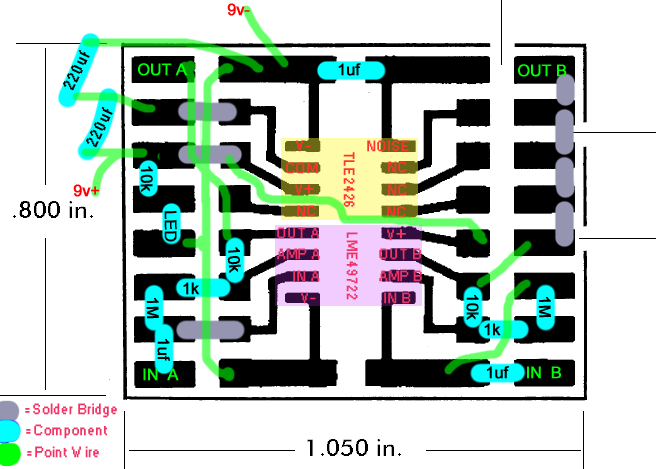Myrdin
Head-Fier
- Joined
- Sep 25, 2008
- Posts
- 61
- Likes
- 0
Hello,
This is the first time I've tried my own layout so I'd like to double check it with the wise folks here. Usually I just get pre-made PCB's. My apologies for the shoddy paintshop image. If you have any suggestions at all they would be appreciated.
This is designed around a standard Capital 9161 SMD protoboard.

I've made two ALIEN DACs so I'm confident this SMD CMoy will pose no assembly difficulties.
Opamp = National Semiconductor LME49722
Power caps = Vishay OS-CON 94SA
Film Caps = Cornell-Dubilier Acrylic type FCA
Resistors = IRC Tantalum PFC-COM
This is the first time I've tried my own layout so I'd like to double check it with the wise folks here. Usually I just get pre-made PCB's. My apologies for the shoddy paintshop image. If you have any suggestions at all they would be appreciated.
This is designed around a standard Capital 9161 SMD protoboard.

I've made two ALIEN DACs so I'm confident this SMD CMoy will pose no assembly difficulties.
Opamp = National Semiconductor LME49722
Power caps = Vishay OS-CON 94SA
Film Caps = Cornell-Dubilier Acrylic type FCA
Resistors = IRC Tantalum PFC-COM

